
Ask anyone what they think of when they think of Scotland, and you’ll probably hear bagpipes, kilts, tartans, maybe Scottish Brogue and haggis (but more on that later). If the year were 1746, you would have heard the same thing.
But it was in that year, after the Battle of Culloden, when the British decimated the Scots, that the British set about to systematically rid the country and its people of their identity and traditions. It didn’t work, which makes it all the more remarkable that everything that defines the Scottish people today is the same as it was centuries ago, and it was my mission to explore them all: kilts, bagpipes and whisky. Even the Gaelic language. Well, almost all—not so much haggis…
And it was on a trip to the Scottish Highlands with UNTOURS, a company with its own unique traditions, that I got to relish in all of it. UNTOURS puts you up in unusual accommodations in multiple cities in more than a dozen European countries—perhaps a castle, a vineyard, or a delightful old church like ours. It provides a car, inundates you with information, connects you with a local contact to answer questions, and sets you off to see what you want to see when you want to see it, unencumbered by anyone else’s set schedule or preferences.

Photo by Victor Block
Untours Philosophy – To Live Like a Local – Makes For an Incomparable Travel Experience
Should we sleep in or get an early start? Have dinner out or eat in? Spend the day exploring our home town, or visit some of the towns within an easy hour’s car ride? Enjoy a sampling of a variety of Scottish single malts, or revel in other less-indulgent sightseeing options?
Such are the many decisions with which we had to cope on our Scottish Highlands UNTOUR, an unrivaled way of traveling that encourages you to live like a local. Which means one decision you never have to make is whether or not to unpack.
We were spending the week in our own apartment, part of an 1837 church in a former life, near our home base of Inverness, and it indeed felt like home. A street sign on the corner with arrows pointing to a museum, the bus station, a market and “Castle and Toilet” warranted a double-take. As did all the neighborhood signs where the Gaelic translation appears below the English ID. Dead language? Not close; they still teach it in school. It is very hard to understand, though. But then again, so is the language they speak, which they claim is English.
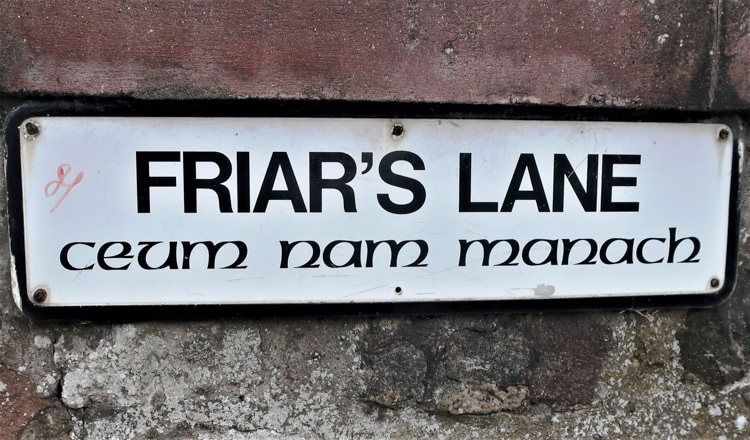
Photo by Victor Block
Kilts, tartans and whisky are not your everyday window-shopping options. If there were a singular symbol for Scotland, it might be tartan, from hotel interiors and tabletop items to cookie tins and everyday clothing. And then there are the wings of planes at the airport sporting bright plaid colors. Scottish tradition is inescapable.
Case in point: the Highland Games. A throwback to ancient Scotland, it is a unifying rite of passage for any Scot. Amidst the vast ocean of tartan, bagpipes and clans sits a cultural event steeped in skill, tradition and community going back more than a thousand years. Now, the games are held in several cities throughout the summer, and we found ourselves at one on the only day of our week that was dry and drenched in sunshine.
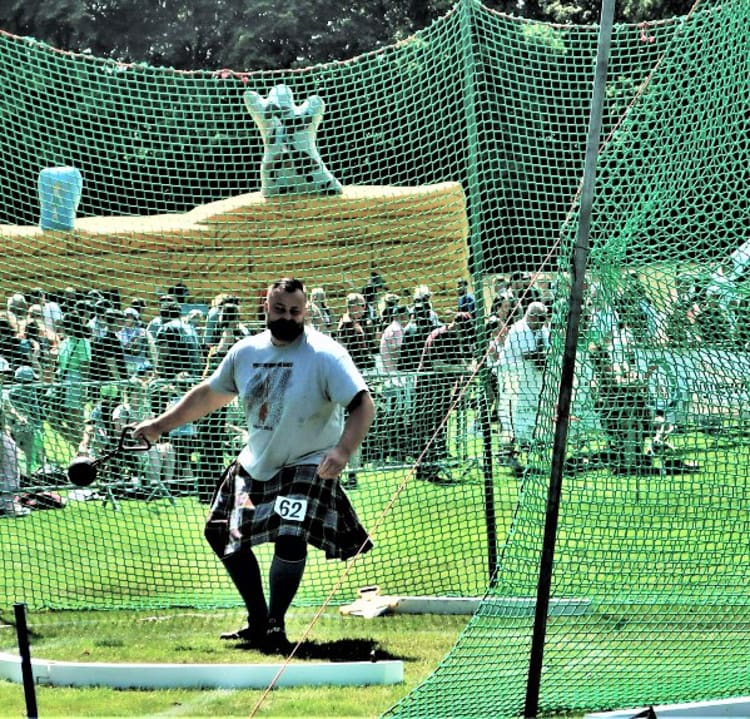
Similar in style to the Renaissance Faires in the States, only here the men are wearing kilts rather than English robes. The music and the incredibly distinctive bagpipes emanating from competing bands never leave your ears. And, of course, every pipe band sports its own tartan—all of which I wanted a sweater made of—so the multitudes of plaids create a fashion visual that is hard to forge from your eyes. And I can’t tell you how many times I heard the words bonny, aye and laddie. To say that the Highland Games are an assault on all the senses is a wee understatement.
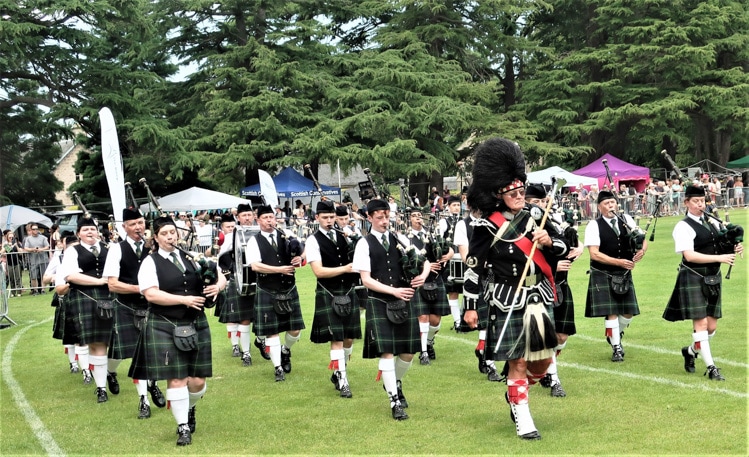
A Visit to the Highland Games in Scotland Transports Old-World Tradition into Modern-Day Entertainment
Although some of the games, such as track and cycling, may be recognizable, the chanter, caber tossing, hammer throw and tug ‘o war are not. Men throwing heavy sticks, balls, hammers—and probably their arms out! The Highland dancers, from age six to seniors, are all decked out in colorful costumes; their intricate steps, toe-tapping music and enthusiasm galore enchant, whatever the age. At one point, I noticed that silence had descended upon the arena, and I realized it was the first time a bagpipe couldn’t be heard somewhere off in the distance. It didn’t last long.
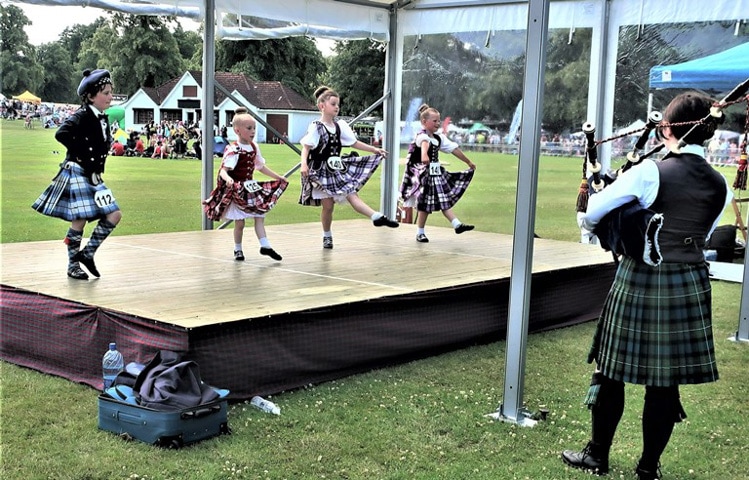
So kilts, bagpipes and Highland games all attest to Scottish heritage. That still leaves whisky. And, oh yes, the damn haggis.
Scottish single malts, celebrated locally as whisky (no e), are known all over the world for their richness, smoothness and cost. With a history dating back as far as the 11th century, Scottish whisky is an important part of the country’s identity, with most of the 140-plus distilleries in the Highlands. Being more of a pedestrian imbiber of alcohol, I was not the ideal candidate for a whisky distillery tour and tasting. But I soldiered on.
At the Glen Ord Distillery, which has been serving up its single malts for almost two centuries, I sampled a flight of their three brands of whisky—a dram each, which I learned was 25 ml. At 12 years of age, they were just kids. Three very different flavors, or so I was told, but I was useless as a connoisseur. They all tasted the same to me. I’m not proud. Then, as instructed, I added three drops of water to each dram to “separate the flavors.” And yes, I noticed they were more potent but still tasted the same. I slinked out of the distillery.
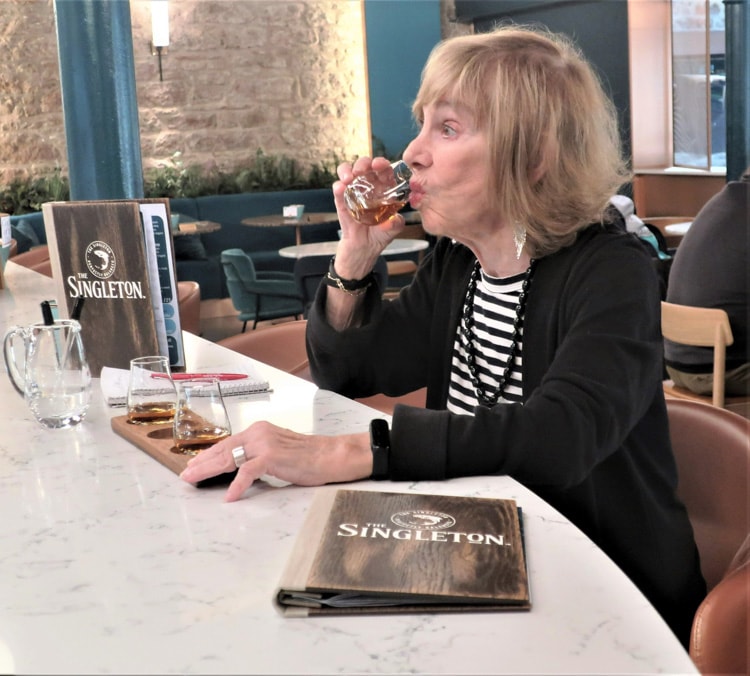
But I was braver there than with one of Scotland’s most traditional dishes, the inevitable haggis, a lovely concoction of a sheep’s liver, lungs and heart which I chose not to pursue. I opted for another single malt, which should tell you how much I didn’t want haggis.

Scotland’s famous haggis should be tasted before actually identified – sheep’s lungs, heart and liver…. Photo by photocreations/Dreamstime.com
Colorful Scottish Tartans Decorate Everything in Scotland From Clothes to Airplane Wings
A visit to The Highland House of Fraser reinforces the uniqueness that is Scotland because there, for a mere $750, you can have your own personalized kilt made. And should you not have your own family tartan, you can choose from 750 different plaids from other clans. And you can even watch a kiltmaker weave your threads while, of course, listening to some bagpipe music.
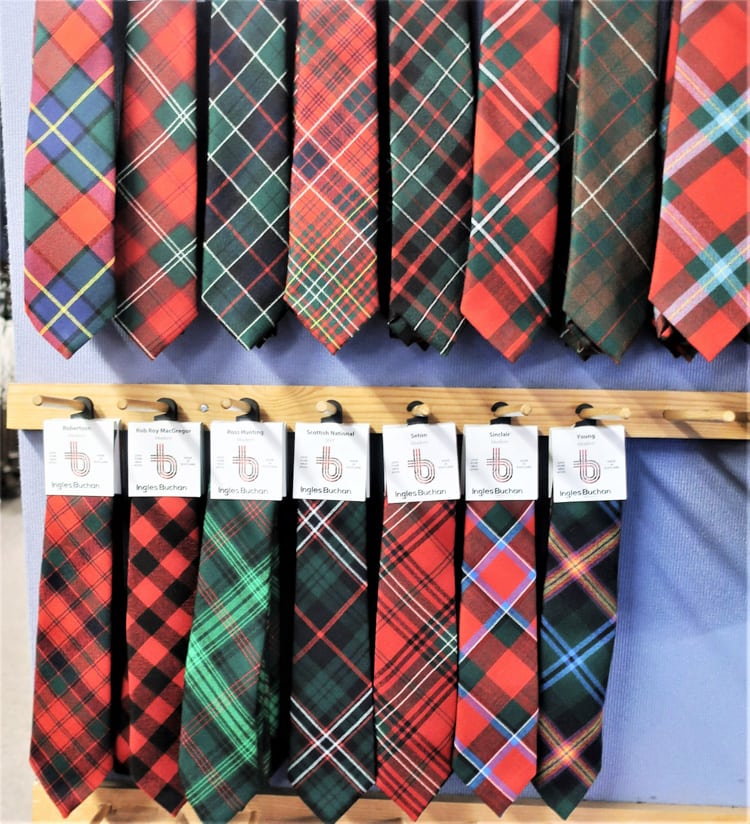
Photo by Victor Block
And lest you think the kilt is itself a throwback to history, not so. They are often worn at every celebratory gathering, from birthday parties to weddings to funerals—and sometimes just because. As our local UNTOURS rep told us, he takes his kilt and bagpipes with him wherever he goes—apparently both wrap up well for traveling—which conveys how much a part of everyday life the old traditions are today.
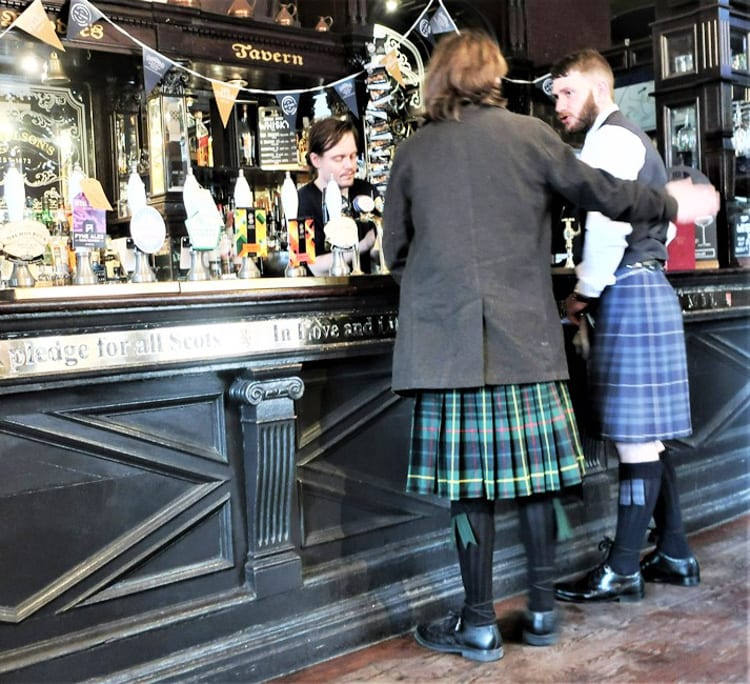
Photo by Victor Block
So despite Britain’s efforts to destroy the language, the clothing, the traditions and the lifestyle of the Scottish people, it all remains alive and well today. And UNTOURS encourages its own traditions. Picking up a roasted chicken and another bottle of wine at a local shop in our home town, we headed back to our cozy apartment to think about what other historic or modern Scottish traditions we would next explore. For more information, visit www.untours.com/scottish-highlands.
P.S. I actually wish I HAD tasted haggis, if only for the sake of this article.
